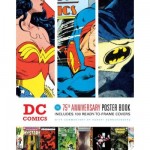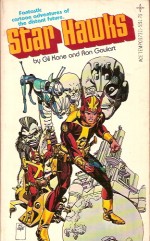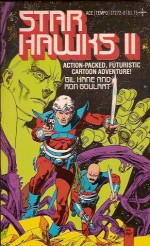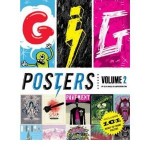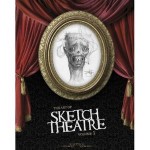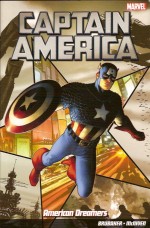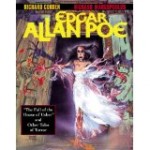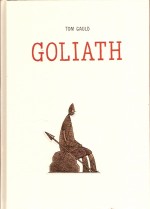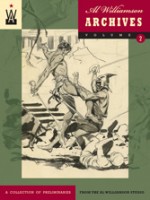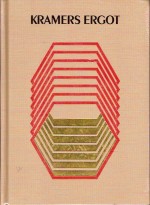New, extended review –
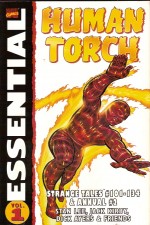
By Stan Lee, Jack Kirby, Dick Ayers & various (Marvel)
ISBN: 978-0-7851-1309-6
Hot on the heels (Sorry, sorry – I simply couldn’t help myself) of the runaway success of Fantastic Four, Stan Lee & Jack Kirby spun the most colourful and youngest member of the team into his own series, hoping to recapture the glory of the 1940s when the Human Torch was one of the company’s “Big Three†superstars.
This captivating, esoteric and economical collection of pure 1960s superhero shenanigans gathers those eclectic but crucial yarns (no less than five major Marvel villains debuted in blistering battle against the Flaming Kid) between Strange Tales #101 and 134 (October 1962- July 1965) and this searing monochrome compendium also includes the team-up of the Torch and Spider-Man from the second Annual.
Within a year of FF #1, the monster anthology title Strange Tales became the home for the hot headed hero. In issue #101, young Johnny Storm started his ancillary solo career in the eponymous ‘The Human Torch’ – a run-of-the-mill script by Larry Lieber (over a plot by his brother Stan) superbly illustrated by Jack Kirby & Dick Ayers wherein Johnny Storm investigated sabotage at a new seaside amusement park and promptly discovered Commie conniving by a Red spy called the Destroyer. Kirby would pencil the first few adventures before moving on after which inker Ayers would assume control of the series’ look for most of its run – although Kirby would generate some of the best covers of his Marvel career throughout the Torch’s tenure.
An odd inconsistency or, more likely, tension and drama-inducing gimmick did crop up here. Although public figures in the Fantastic Four, Johnny and his sister Sue lived part-time in the rural New York hamlet of Glenville and despite the townsfolk being fully aware of her as the glamorous and heroic Invisible Girl, they seemed oblivious to the fact that her baby brother was the equally famous Torch. Many daft pages but ingenious pages of Johnny protecting his secret identity would ensue before the situation was brilliantly resolved.
Although something of a hit-or-miss proposition, the strip was the origin point for many of Marvel’s greatest villains. The first of these appeared in the very next tale ‘Prisoner of the Wizard’ (Lee, Lieber, Kirby & Ayers) wherein a spiteful and publicity-hungry intellectual giant determined to crush the Torch to prove his superiority to the callow kid who stole all the newspaper headlines and the same creative team, then produced the captivating classic ‘Prisoner of the 5th Dimension’, as Johnny defeated a potential invasion and freed a captive populace from tyranny before easily trashing adhesive-toting adversary ‘Paste-Pot Pete!’ (later revamped as the terrifying Trapster), before teaming with sister Sue to tackle the deadly ‘Return of the Wizard’.
When Kirby moved on to engineer and design a host of new characters and concepts (occasionally returning as necessity or special events warranted) Ayers assumed full art duties beginning with Strange Tales #106 (March 1963). This yarn was notable in that it revealed that the entire town of Glenville had always known the Torch’s secret identity but were just playing along to keep him happy.
When Acrobat Carl Zante knocked on Johnny’s door and offered him a better-paying gig in ‘The Threat of the Torrid Twosome’ the kid’s head was swelled and swayed but he soon discovered he had been played by a master conman and diabolical bandit…
This first hint of tongue-in-cheek whimsy presaged an increasing lightness of touch which would come to characterise the Marvel style as much as the infighting between team-mates. The villainous Acrobat would return in another milestone in issue #114…
Issue #107 would be Lieber’s last as Ayers drew a splendid punch-up with the ‘Sub-Mariner’ – a tale reminiscent of the spectacular and immensely popular Golden Age battles of their publishing forebears. Veteran writer Robert “Berns†Bernstein scripted the next two, frankly daft yarns over Lee’s plots, but the saving grace of both ‘The Painter of a Thousand Perils!’(empowered by an alien art kit which brought illustrations to life in ST #108) and ‘The Sorcerer and Pandora’s Box’ (#109, with monstrous demons attacking humanity) was the brief return of King Kirby to the pencilling.
H.E. Huntley (Ernie Hart) typed the words for Ayers to illustrate in ‘The Human Torch vs. the Wizard and Paste-Pot Pete!’ a cunning clash which presaged the villain’s eventual evolution into the FF’s evil counterparts the Frightful Four. In #111 the Torch made short work of ‘Fighting to the Death with the Asbestos Man!’ – yet another demented scientist experiencing the travails and tragedies of simpler times.
Strange Tales #112 (scripted by Jerry Siegel under the pen-name Joe Carter) introduced murderous electrical marauder the Eel who accidentally swiped and activated a miniature A-Bomb in the tense, multifaceted thriller ‘The Human Torch Faces the Threat of the Living Bomb!’ after which Strange Tales Annual #2, featured ‘The Human Torch on the Trail of the Amazing Spider-Man!’ a terrific romp by Lee, Kirby & Steve Ditko wherein the wall-crawler was framed by international art thief The Fox, whilst back in the regular comicbook, “Carter†created another long-term baddie in ‘The Coming of the Plantman!’
Strange Tales #114 changed the face of the Marvel Firmament forever…
Written by Stan Lee himself, illustrated by Kirby & Ayers, it featured the return of the third of Timely Comics’ Golden Age Big Three – or at least an impersonation of him by the insidious Acrobat – in a blockbusting battle entitled ‘The Human Torch meets…Captain America!
Here’s a quote from the last panel…
“You guessed it! This story was really a test! To see if you too would like Captain America to Return! As usual, your letters will give us the answer!†I wonder how that all turned out?
Lee took over as scripter with ST #115’s ‘The Sandman Strikes!’ as Johnny impersonated Spider-Man to defeat the deadly atomic thug Flint Marko, after which the Torrid Teen and team-mate Ben (The Thing) Grimm battled each other ‘In the Clutches of the Puppet Master!’ in #116, with Ayers inked by George Roussos in his own secret identity of George Bell.
‘The Return of the Eel! proved far more of a challenge in #117 after which the Wizard had another go as ‘The Man Who Became the Torch!’, consequently nearly killing the Thing and Reed Richards besides.
A first brush with Marvel’s soon-to-be core readership came in #119 when ‘The Torch Goes Wild!’ due to a Commie Agent called the Rabble Rouser who mesmerised decent citizens, making them surly and rebellious, after which Kirby stepped in for #120 as ‘The Torch Meets Iceman!’, a terrific action extravaganza that pretty much ended the glory days of this strip. From then on, despite every gimmick and occasional burst of sheer inspiration the Bullpen could muster, a slow decline set in as the quirky back-up strip Doctor Strange grew in popularity – and cover space…
Issue #121 saw Johnny as ‘Prisoner of the Plantman!’ (Lee & Ayers) and #122 found a brute, conman and yogi all augmented by Dr. Doom and mustered as the woefully lame Terrible Trio launch an ill-conceived attack in ‘3 Against the Torch!’
Strange Tales #123 saw a creepy inventor build himself an impressive insectoid exo-suit to get rich the easy way as in an effort to boost ratings, The Thing became a permanent fixture in ‘The Birth of the Beetle!’ This so-so saga was most notable for the pencil job by Golden Age Torch creator Carl Burgos, after which Johnny and Ben tackled a fully re-designed ‘Paste-Pot Pete’ (inked by Paul Reinman) and then went after another old adversary in ‘The Sub-Mariner Must Be Stopped!’
‘Pawns of the Deadly Duo!’ saw the Puppet Master return, allied to the Mad Thinker in a clever but shallow yarn whilst #127 pitted Ben and Johnny against a bizarre puzzle and ‘The Mystery Villain!’
After a stunning Kirby Thing pin-up the Fantastic Two then unwillingly battled ‘Quicksilver and the Scarlet Witch’ in #128 (inked by Frankie Ray, AKA Frank Giacoia), as the Homo Superior siblings made an abortive first attempt to quit Magneto’s Brotherhood of Evil Mutants, after which ‘The Terrible Trio!’ once more failed to impress or assassinate the heroes…
Pop culture reeled and staggered with #130 in ‘Meet the Beatles’ (some sort of popular musical combo, not villains, and they actually didn’t meet them at all) although the brilliant Golden Age artist Bob Powell (with inking from Chic Stone) did take over the art chores for the comedy of errors/crime caper. Ayers returned to ink #131, the dire ‘Bouncing Ball of Doom!’ with the Mad Thinker siccing a cybernetic bowling bowl on the pair but Larry Ivie then wrote a capable Space Race thriller in ‘The Sinister Space Trap!’ inked by Mike Esposito under his Mickey DeMeo alias.
Stan Lee returned for the last two tales in ST #133 and #134; ‘The Terrible Toys’ wherein the Puppet Master tried a new modus operandi and ‘The Challenge of… The Watcher!’ (inked by the majestic Wally Wood) with the Torch and Thing transported to legendary Camelot to battle time-reaver Kang the Conqueror, but it was clear that the writer’s mind was elsewhere, most likely with the new Nick Fury, Agent of S.H.I.E.L.D. strip that would replace the Torch and thing in Strange Tales #135.
It is interesting to note that as the parent Fantastic Four title grew in scope and quality The Human Torch’s own series diminished. Perhaps there is something to be said for concentrating one’s efforts or not overexposing your stars. What was originally a spin-off for the younger audience faded as Marvel found its voice and its marketplace, although there would be periodic efforts to reinvigorate the Torch.
Sadly the historic value often supersedes the quality of most of these strange tales, but there’s still a good deal that’s great about this series and Fights ‘n’ Tights fans with a sense of tradition and love of fun will find this book irresistible and unmissable.
© 1962, 1963, 1964, 1965, 2003 Marvel Characters, Inc. All rights reserved.
